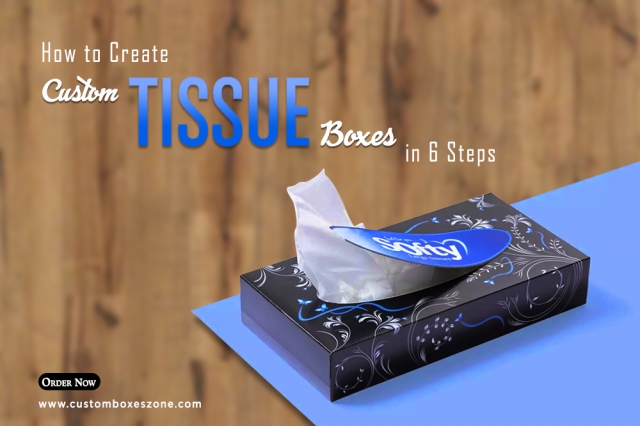Custom Tissue Boxes have become quite popular in recent years, as people have discovered the ease and cost-effectiveness of decorating tissue boxes at home. Whether you’re looking to make your own wedding favors or simply want to jazz up your bathroom, creating Custom Tissue Boxes can be simple if you follow these six steps.
Decide on the Design
The first step is deciding on the design of your tissue box. Choose a shape, color, and theme for your box. If you want them personalized Custom Tissue Boxes with pictures or text, that's an option too! All you have to do is upload the image file of your choice onto this website, save it as a pdf file (if necessary) and then follow the instructions below to print it onto paper.
For boxes where I want photos printed on one side only, I recommend using photo paper instead of cardstock paper since photo paper is more rigid than cardstock so images will be less likely to curl up from being handled frequently. It also makes them last longer if they're going to be used often.
Choose the Right Size of Custom Tissue Boxes
You will need a standard size Custom Tissue Boxes.
- Measure the height of your tissue box, which is typically 9 inches.
- Measure the length and width of your tissue box, which should be 2x3 inches for a standard size.
- Cut out two pieces of cardboard that are 9x2 inches and three pieces that are 3x2 inches.
- Fold all six pieces so they measure 9x1 inch and use glue or double-sided tape (or both!) to secure them together.
- Line up the seams on the bottom side of the top piece and glue it down. Then line up the seams on the top side of this piece with those on the bottom piece, fold down to create an overlap and secure with glue or double-sided tape. Repeat these steps for each side, then stand up your newly created custom tissue box!
Select the Appropriate Material
It is a most important step to select the appropriate material for your custom tissue box. Select the appropriate material for your packaging.
Cardboard is a common choice, though it is not recommended if you want a sturdy box that will last long-term. Another popular option is corrugated cardboard, which is heavier and more durable than regular cardboard, but still thin and relatively inexpensive.
Select the appropriate material for your Custom Tissue Boxes. Cardboard is a common choice, though it is not recommended if you want a sturdy box that will last long-term.
Determine the Printing Process
Important steps to create boxes are deciding which printing process you want your personalized tissue boxes. There are many printing processes that you can use for your custom tissue boxes. The most popular and easiest is a digital print.
With this process, the design is converted into a computer file, which then prints on paper or fabric using a machine that has a large inkjet printer head, similar to what you would find on an office printer. Digital printing is also known as wide-format printing because it uses larger sheets of paper or fabric than other printing processes.
Digital printing is the cheaper option, but it produces a lower quality print on the tissue box. Offset printing is more expensive, but it results in higher-quality prints that have sharper details and richer colors.
Assemble the Box
Now you need to assemble your box. Measure and cut the pieces for the top, bottom, and sides of the box to size. Add a small lip to one of the long edges of each piece so that they fit together nicely and securely. Use wood glue and nails or staples to assemble the Custom Tissue Boxes.
Fill the box with Custom Printed Tissue Paper Wholesale and other goodies. Next, paint the outside of the box. Apply two coats of paint and allow drying time between coats. Paint the entire exterior surface, including seams and nail heads. Paint both inside surfaces if desired.
To seal the porous woods used in this project (pine) with varnish, follow these steps: Mix varnish according to manufacturer's instructions; pour into a container large enough for all surfaces to be coated; apply coat after coat until entire box is covered on both inside and outside surfaces; allow varnish to dry thoroughly before use.
Finishing Touches
Once you have finished your design, save it and send a copy of the file over to your printer. Use a laminator machine or an iron to seal the design on top of the Custom Tissue Boxes.
Draw or trace your design onto the tissue box and use a craft knife or scissors to cut out the shape you traced.
Conclusion
Creating custom tissue boxes is a creative way to show off your brand, advertise an event, or just do something different with your packaging. Making these projects is easy and fun and can be done over the course of a few hours.
All you need is a basic understanding of how to use Illustrator and InDesign, but the best part about this craft is that there are no limitations when it comes to design. You can create anything you want.






